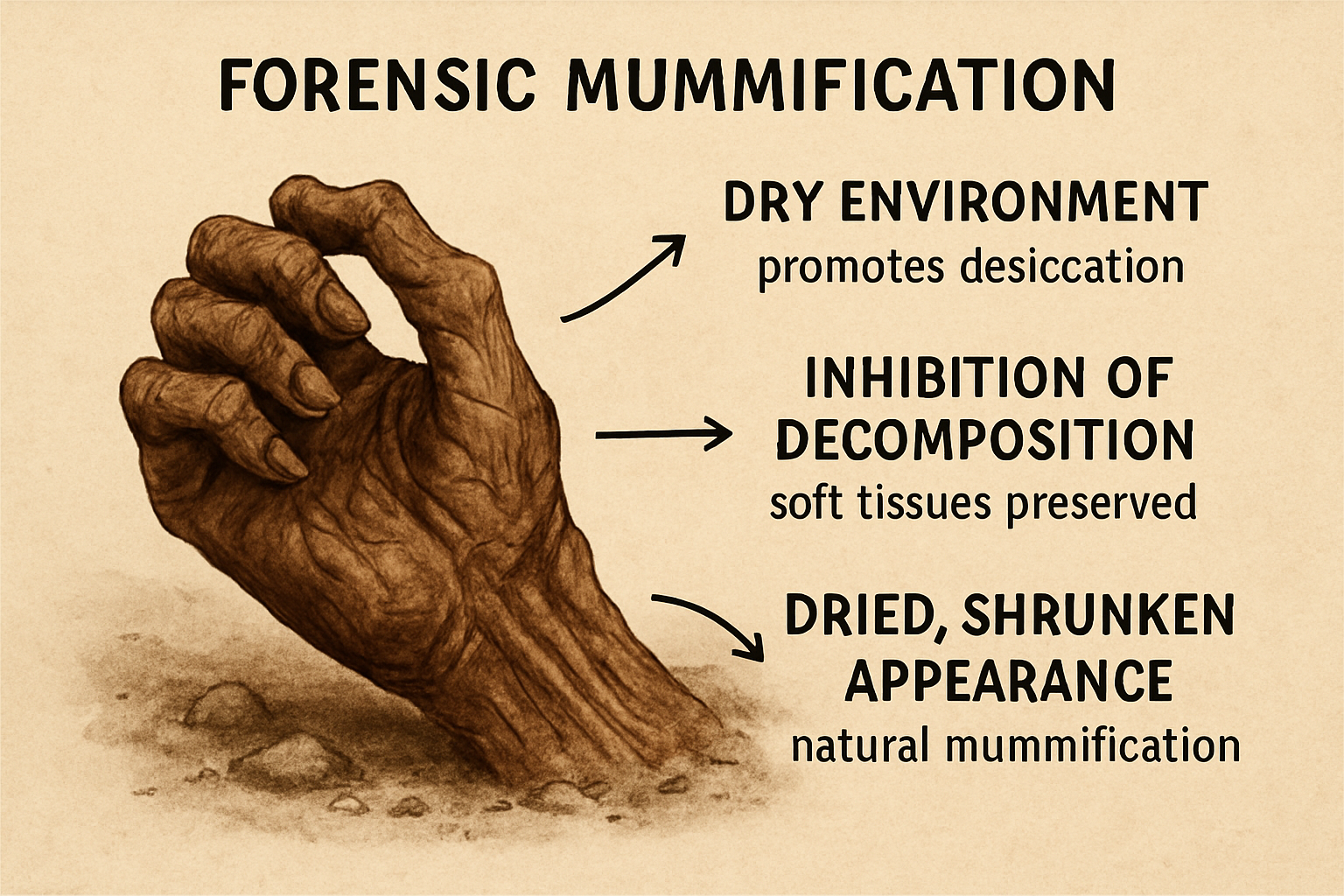In the realm of forensic science Discover the fascinating field of Forensic Science, the application of scientific principles to legal matters. This post delves into its many disciplines, from DNA analysis to crime scene investigation, its importance in the justice system, Read Full Definition, every detail matters. Each piece of evidence
Discover the fascinating field of Forensic Science, the application of scientific principles to legal matters. This post delves into its many disciplines, from DNA analysis to crime scene investigation, its importance in the justice system, Read Full Definition, every detail matters. Each piece of evidence Evidence is any form of proof, such as objects, materials, or scientific findings, presented to establish or disprove a fact in a legal proceeding. It is used to reconstruct events and link or exclude individuals Read Full Definition can be the key to unlocking a case, from the tiniest fiber to the most minute chemical trace. Among these crucial clues, one phenomenon stands out for its unique ability to provide insights into the postmortem intervalThe post-mortem interval (PMI) is the time that has elapsed since an individual's death. When the time of death is not known, the interval may be estimated, and so an estimated time of death is established. Read Full Definition: marbling. This distinctive pattern, often observed on the skin of deceased individuals, holds valuable information for forensic pathologists and investigators alike.
Evidence is any form of proof, such as objects, materials, or scientific findings, presented to establish or disprove a fact in a legal proceeding. It is used to reconstruct events and link or exclude individuals Read Full Definition can be the key to unlocking a case, from the tiniest fiber to the most minute chemical trace. Among these crucial clues, one phenomenon stands out for its unique ability to provide insights into the postmortem intervalThe post-mortem interval (PMI) is the time that has elapsed since an individual's death. When the time of death is not known, the interval may be estimated, and so an estimated time of death is established. Read Full Definition: marbling. This distinctive pattern, often observed on the skin of deceased individuals, holds valuable information for forensic pathologists and investigators alike.
- Introduction
- The Science Behind Marbling
- Factors Influencing Marbling Development
- Environmental Temperature
- Humidity
- Body Composition
- Cause of Death
- Clothing and Coverings
- Body position
- Insect Activity
- Medical Interventions
- Underlying Medical Conditions
- Time Since Death
- Estimating the Stage of Decomposition
- Marbling Through the Stages of Decomposition
- Fresh Stage (0-24 Hours)
- Early Decomposition (24-72 Hours)
- Active Decomposition (3-7 Days)
- Advanced Decomposition (1-2 weeks after death)
- Skeletonization (weeks to months after death)
- Importance of How marbling interact with other postmortem changes:
- Determining the Cause of Death
- Identifying the Time of Death
- Key Indicators
- Color Intensity:
- Initial Appearance:
- Progression and Spread:
- Factors Affecting PMI Estimation
- Marbling in Special Circumstances
- Aquatic Environments:
- 1. Delayed Onset of Marbling
- 2. Altered Marbling Patterns
- 3. Washerwoman’s Skin
- 4. Marine Life Activity
- Extreme Temperatures:
- High-Altitude and Buried Bodies:
- Enclosed Spaces:
- Mass Fatality Incidents:
- Embalmed Bodies:
- Challenges in Interpreting Marbling Patterns
- Marbling vs. Other Postmortem Changes
- Conclusion
But what exactly is marbling, and why does it play such a vital role in forensic investigations? Let’s embark on a journey to uncover the secrets behind this fascinating postmortem change and explore its significance in the world of forensic science.
Marbling, in the context of forensic pathology, refers to a specific pattern that appears on the skin after death. It’s characterized by a network of bluish-green lines resembling marble veins, hence the name. This phenomenon occurs as a result of the breakdown of blood vessels and the spread of bacteria throughout the body’s vascular system.
As we delve deeper into the topic, we’ll discover how marbling forms, what it can tell us about the time since death, and how forensic experts use this information to piece together the puzzle of a person’s final moments. From biological origins to practical applications in criminal investigations, marbling offers a unique window into the complex processes that occur after death.
Join us as we explore the intricate world of postmortem changes, unravel the mystery of marbling, and gain a deeper appreciation for the science that helps bring justice to the departed. Whether you’re a budding forensic scientist, a true crime enthusiast, or simply curious about the workings of the human body, this journey promises to be both enlightening and fascinating.
Introduction
Marbling is a term that comes up frequently in the meat production industry, but it has a whole other meaning in forensic science. In this field, marbling refers to the process of bacteria from the intestines of a deceased individual infiltrating their venous system and consuming blood present in vessels to obtain nutrients. This causes the walls of these vessels and surrounding tissues to stain and gives them a distinct veiny appearance not unlike marbled meat. It may seem like an unsettling occurrence, but it holds significant value in forensic science as it serves as an indicator for time of death estimation. The duration between infestation by bacteria and staining can help determine how long a person has been dead and plays an important role in investigations. Therefore, understanding the concept of marbling is essential for those working or studying within forensic science settings.
The Science Behind Marbling
Marbling is a captivating postmortem phenomenon that occurs as part of the body’s natural decomposition process. To truly appreciate its significance in forensic science, we must first understand the biological mechanisms that give rise to this distinctive pattern.
At its core, marbling is the result of a complex interplay between the body’s vascular system and the bacteria that naturally reside within our intestines. When a person dies, the heart stops pumping blood, and the body’s immune system ceases to function. This creates an environment where bacteria can thrive and spread unchecked.
The process begins in the intestines, where a vast ecosystem of microorganisms resides. In life, these bacteria are kept in check by our immune system and the constant movement of the digestive tract. However, after death, they begin to multiply rapidly and spread beyond their usual confines.
As these bacteria proliferate, they produce gases as a byproductA secondary or incidental product of a manufacturing process. Read Full Definition of their metabolic processes. These gases, primarily hydrogen sulfide and methane, begin to accumulate within the body. The increased pressure forces the gases and bacteria into the surrounding tissues and blood vessels.
The vascular system, no longer actively circulating blood, becomes a highway for these bacterial invaders. As they travel through the blood vessels, the bacteria break down the hemoglobin in red blood cells, releasing iron. This iron then reacts with the hydrogen sulfide produced by the bacteria, forming iron sulfide.
Iron sulfide has a distinctive blue-green color, which becomes visible through the skin as the bacteria spread throughout the vascular network. This creates the characteristic marbled appearance, with blue-green lines tracing the path of blood vessels beneath the skin’s surface.
The marbling pattern typically begins in the right lower quadrant of the abdomen, near the cecum, where the concentration of intestinal bacteria is highest. From there, it spreads outward, following the path of major blood vessels and eventually covering larger areas of the body.
Factors Influencing Marbling Development
The development and progression of marbling in a deceased body is not a uniform process. Various factors can significantly influence how quickly marbling appears, spreads, and becomes pronounced. Understanding these factors is crucial for forensic experts to interpret marbling patterns and estimate the postmortem interval accurately. Let’s explore the key elements that can affect marbling development:
Environmental Temperature
Environmental Temperature: Temperature is perhaps the most significant factor influencing marbling and overall decomposition rates. Higher temperatures generally accelerate bacterial growth and chemical reactions, leading to faster marbling development.
- Warm environments (above 70°F or 21°C): Marbling may appear more quickly and progress rapidly.
- Cool environments (below 50°F or 10°C): The process slows down, potentially delaying the appearance of marbling.
- Freezing temperatures: Can halt the marbling process entirely until the body thaws.
It’s important to note that the body’s internal temperature may differ from the ambient temperature, especially in the early postmortem period.
Humidity
Moisture levels in the environment can affect bacterial growth and the rate of decomposition:
- High humidity: This can promote bacterial growth and accelerate marbling.
- Low humidity: May slow down the process or lead to mummification in extreme cases.
Body Composition
An individual’s physical characteristics can influence how marbling develops:
- Body fat percentage: Higher body fat may lead to more pronounced marbling due to the distribution of subcutaneous fat.
- Muscle mass: Can affect the visibility of marbling patterns.
- Skin pigmentation: Darker skin tones may make marbling less immediately apparent, requiring closer examination.
Cause of Death
The circumstances surrounding the death can impact marbling development:
- Sepsis or infection: May accelerate the process due to pre-existing bacterial proliferation.
- Exsanguination: Significant blood loss could potentially alter the appearance of marbling.
- Drowning: Water exposure can affect decomposition rates and marbling patterns.
Clothing and Coverings
What the body is wearing or covered with can influence marbling:
- Insulating materials: Heavy clothing or blankets may create a microenvironment that affects decomposition rates.
- Tight clothing: This could potentially alter the visibility or pattern of marbling in certain areas.
Body position
The position in which the body is found can affect how marbling develops:
- Prone vs. supine: Gravity can influence the bodily distribution of fluids and gases, potentially affecting marbling patterns.
- Contact with surfaces: Areas in direct contact with the ground or other surfaces may show different marbling patterns.
Insect Activity
The presence of insects, mainly flies and their larvae, can influence decomposition and potentially affect marbling:
- Accelerated decomposition: Insect activity can speed up the breakdown of tissues.
- Altered patterns: Insect feeding may disrupt or obscure marbling patterns in certain areas.
Medical Interventions
Any medical procedures performed shortly before or after death can impact marbling:
- Intravenous lines: May create localized areas of altered marbling patterns.
- Embalming: Can significantly delay or prevent the natural marbling process.
Underlying Medical Conditions
Certain pre-existing health conditions may influence marbling:
- Vascular diseases: Could potentially affect the distribution and appearance of marbling.
- Edema: Excess fluid in tissues might alter how marbling develops.
Time Since Death
While marbling itself is used to estimate the postmortem interval, the time since death is a crucial factor in its development:
- Early postmortem period: Marbling typically appears 24-36 hours after death.
- Later stages: As decomposition progresses, marbling may become less distinct as other postmortem changes take over.
Forensic pathologists and investigators must understand these factors and their potential impacts on marbling development. It allows them to interpret marbling patterns more accurately and consider potential variables affecting their observations.
Forensic experts must take a holistic approach when examining a body for marbling, considering all these factors in conjunction with other postmortem changes and evidence from the scene. This comprehensive analysis helps ensure that marbling patterns are interpreted correctly within the context of each unique case.
As research in forensic science continues to advance, our understanding of these influencing factors and their precise"Precise" refers to the degree of closeness or consistency between multiple measurements or values taken under the same conditions. It indicates how well these measurements agree with each other, regardless of whether they are accurate Read Full Definition effects on marbling may become even more refined. This ongoing research highlights the dynamic nature of forensic pathology and the importance of staying updated with the latest findings in the field.
Estimating the Stage of Decomposition
The onset of putrefaction can be measured by observing marbling, which is the discoloration of the skin caused by the pooling of blood after death. This process typically becomes noticeable within 36-48 hours in warm weather conditions and is especially prominent in various areas throughout the body – including superficial veins found in the abdomen, shoulders, chest, and groin region. Forensic analysts can accurately estimate how long a person has been deceased by carefully measuring the extent and distribution of marbling across these regions. Such information is key for solving criminal investigations where the time of death is crucial in determining guilt or innocence.
Marbling Through the Stages of Decomposition
Marbling evolves as the body transitions through different stages of decomposition, providing critical clues for forensic investigations:
Fresh Stage (0-24 Hours)
- During this initial period, marbling is typically not yet visible. The body appears relatively unchanged externally, although internal decomposition processes have begun.
- No visible marbling
- Other early postmortem changes like rigor mortis and livor mortis may be present.
Early Decomposition (24-72 Hours)
- This is when marbling usually first becomes apparent.
- Initial appearance: Faint blue-green lines may be visible near the cecum in the right lower quadrant of the abdomen.
- Progression: The pattern slowly begins to spread outward from the initial site.
- Color: The marbling lines are typically light in color at this stage.
Active Decomposition (3-7 Days)
- Marbling becomes more pronounced during this stage.
- Spread: The marbling pattern extends to larger body areas, often including the chest, arms, and legs.
- Color intensity: The blue-green color becomes more vivid and easier to distinguish.
- Pattern complexity: The network of lines becomes more intricate as smaller blood vessels are affected.
Advanced Decomposition (1-2 weeks after death)
- At this stage, marbling may begin to be obscured by other decomposition processes.
- Color changes: The overall skin color may darken, making marbling less distinct.
- Skin slippage: As the epidermis begins to separate from underlying tissues, it may disrupt marbling patterns.
- Gas accumulation: Bloating of the body can stretch the skin, potentially altering the appearance of marbling.
Skeletonization (weeks to months after death)
- In the later stages of decomposition, soft tissues break down, and marbling is no longer visible.
- No visible marbling
- Other forensic evidence becomes more relevant for estimating the time since death
It’s important to note that these timeframes are approximate and can vary significantly based on the factors discussed in the previous section. Environmental conditions, in particular, can dramatically affect the decomposition rate and the marbling progression.
Importance of How marbling interact with other postmortem changes:
Forensic experts must also be aware of how marbling interacts with other postmortem changes throughout these stages:
Determining the Cause of Death
Examining marbling in the veins is an effective way to determine the cause of deathThe cause of death refers to the specific injury, disease, or underlying condition that directly leads to an individual's demise. It is a critical determination made by medical professionals, such as Medical Examiners or Coroners, Read Full Definition. In some cases, a deceased individual’s intestinal bacteria can spread throughout the bloodstream and result in sepsis. This dangerous medical condition occurs when the body’s immune system overreacts to an infection. The appearance of marbling within the veins usually points towards sepsis as being the reason for death. This data Information in analog or digital form that can be transmitted or processed. Read Full Definition can then be utilized in scrutinizing suspicious deaths by investigators aiming to establish whether or not any foul play was involved. With this diagnostic tool, doctors, forensic pathologists, and law enforcement agencies can gain insights into identifying potential causes of untimely deaths more efficiently and accurately.
Information in analog or digital form that can be transmitted or processed. Read Full Definition can then be utilized in scrutinizing suspicious deaths by investigators aiming to establish whether or not any foul play was involved. With this diagnostic tool, doctors, forensic pathologists, and law enforcement agencies can gain insights into identifying potential causes of untimely deaths more efficiently and accurately.
Identifying the Time of Death
Marbling can serve a crucial role in determining the time of death. It is an essential factor that assists investigators in deciding when a person was killed. The degree of marbling present in the muscles can provide vital hints about the stage of decomposition, which further allows forensic experts to calculate the approximate time of death. This piece of evidence can prove to be incredibly valuable while solving homicide cases, as it provides critical information that enables investigators to ascertain when the crime took place. Knowing this information can help authorities narrow their search and focus their investigation on people who were present or had access to the victim during that period.
The progression of marbling follows a relatively predictable pattern, which, combined with other postmortem changes, helps forensic experts narrow down the time of death.
Key Indicators
Color Intensity:
Over time, the deepening of the blue-green hue provides additional clues about the PMI. More vivid marbling generally indicates a later stage in the early decomposition process.
Initial Appearance:
Marbling typically becomes noticeable 24 to 36 hours after death, starting in the right lower quadrant of the abdomen.
Progression and Spread:
As decomposition progresses, the marbling pattern spreads across the body. Forensic pathologists use standardized body maps to record the extent of marbling and correlate it with other markers, such as rigor mortis and livor mortis.
Factors Affecting PMI Estimation
Several variables can influence the development and visibility of marbling:
Forensic experts typically use marbling in conjunction with other postmortem indicators to provide a more accurate estimate of the time since death.
Marbling in Special Circumstances
Marbling does not manifest uniformly in all conditions. Exceptional circumstances can significantly affect its appearance:
Aquatic Environments:
Aquatic Environments: Bodies recovered from water may show delayed or altered marbling due to cooler temperatures and water exposure.
Decomposition in aquatic environments presents unique challenges to forensic investigations. Here are the key factors influencing marbling patterns in bodies recovered from water:
1. Delayed Onset of Marbling
- Cooler Water Temperatures: Water tends to maintain lower temperatures than air, slowing the decomposition process. This delay affects the buildup of gases in the body, postponing the appearance of marbling patterns.
2. Altered Marbling Patterns
- Water Pressure and Currents: Submersion affects the distribution of gases within the body. Pressure and water movement can alter the formation and visibility of marbling patterns.
3. Washerwoman’s Skin
- Prolonged Water Exposure: Skin wrinkling, commonly known as “washerwoman’s skin,” occurs due to prolonged immersion. This phenomenon can obscure the early signs of marbling.
4. Marine Life Activity
- Feeding and Damage: Aquatic organisms, including fish and invertebrates, may feed on the body, causing significant disruption to the skin and soft tissues. This activity can distort marbling patterns or eliminate them entirely.
Extreme Temperatures:
Extreme Temperatures: Rapid decomposition can accelerate marbling in hot environments, while freezing conditions may delay its onset.
- Heat exposure:
- Accelerated decomposition: High temperatures speed up bacterial growth and chemical reactions.
- Rapid marbling: Marbling may appear and progress much faster than usual.
- Mummification: Rapid desiccation can prevent typical marbling patterns from forming in extremely hot, dry conditions.
- Cold exposure:
- Delayed decomposition: Low temperatures slow down bacterial activity and chemical processes.
- Frozen bodies: Marbling may not develop at all until the body thaws.
- Freeze-thaw cycles: Repeated freezing and thawing can create unusual marbling patterns.
High-Altitude and Buried Bodies:
High-Altitude and Buried Bodies: Lower temperatures and limited air circulation can slow down decomposition, affecting the typical progression of marbling.
- High-Altitude Environments: The lower air pressure and typically cooler temperatures at high altitudes can affect marbling:
- Slower decomposition: Cooler temperatures may delay the onset and progression of marbling.
- Gas expansion: Lower air pressure can cause gases in the body to expand more, potentially affecting marbling patterns.
- Buried Bodies: Bodies interred in soil face unique decomposition conditions:
- Delayed marbling: The insulating effect of soil can slow down decomposition processes.
- Uneven progression: Depending on soil contact and composition, different body parts may decompose at different rates.
- Adipocere"Adipocere," also known as "grave wax," refers to a unique substance that forms during the decomposition of human bodies when they are buried in moist or waterlogged environments. It is a waxy, soap-like material that Read Full Definition formation: In certain soil conditions, body fats may convert to a waxy substance, potentially altering or obscuring marbling patterns.
Enclosed Spaces:
Enclosed Spaces: Sealed environments, such as car trunks or airtight containers, may create a microclimate that alters the natural development of marbling.
- Enclosed Spaces: Bodies found in sealed environments (e.g., car trunks, airtight containers) may exhibit atypical marbling:
- Accelerated decomposition: Limited air circulation can create a greenhouse effect, speeding up bacterial growth.
- Unusual gas distribution: Confined spaces may alter how decomposition gases spread through the body.
Mass Fatality Incidents:
In disasters with multiple casualties, unique factors can affect marbling:
- Commingled remains: Marbling patterns may be disrupted if bodies are in contact with each other.
- Varied environmental exposures: Different bodies may experience different conditions, leading to inconsistent marbling across victims.
Embalmed Bodies:
Chemical interventions used in embalming significantly delay or prevent marbling formation, rendering it an unreliable indicator.
- Delayed or prevented marbling: The chemicals used in embalming can inhibit bacterial growth and vascular changes.
- Artificial coloration
Each of these scenarios requires forensic experts to adjust their interpretations of marbling, considering the unique environmental and situational factors at play.
Challenges in Interpreting Marbling Patterns
While marbling can provide valuable insights in forensic investigations, interpreting these patterns is not without its challenges. Forensic experts must navigate a complex landscape of variables and potential confounding factors to draw accurate conclusions from marbling observations. Understanding these challenges is crucial for maintaining the integrity and reliability of forensic analyses.
Let’s explore some of the key challenges in interpreting marbling patterns:
Environmental Variability:
- Temperature fluctuations: Rapid ambient temperature changes can affect the marbling development rate, making it difficult to establish a consistent timeline.
- Microenvironments: Bodies found in enclosed spaces or partially submerged may experience different decomposition rates in different areas, leading to inconsistent marbling patterns.
Individual Differences:
- Body composition: Variations in body fat distribution and muscle mass can affect how marbling appears and progresses.
- Medical conditions: Pre-existing health issues, particularly those affecting the vascular system, may alter marbling patterns.
- Medications: Certain drugs taken before death could potentially influence postmortem bacterial growth and, consequently, marbling development.
Postmortem Interventions:
- Body movement: If a body is moved after death, it can alter the distribution of fluids and gases, potentially affecting marbling patterns.
- Medical procedures: Postmortem examinations or treatments (e.g., embalming) can disrupt natural decomposition processes and marbling.
Cause of Death:
- Traumatic injuries: Significant wounds or bruising can obscure or alter marbling patterns in affected areas.
- Toxicological factors: Certain poisons or drugs may affect bacterial growth or vascular changes, influencing marbling development.
Time Since Death:
- Early stages: In the very early postmortem period, marbling may not yet be visible, limiting its usefulness for PMI estimation.
- Advanced decomposition: As decomposition progresses, other changes may obscure marbling patterns, making them harder to interpret accurately.
Insect Activity:
- Accelerated decomposition: The presence of insects, particularly in warm environments, can speed up decomposition and alter the typical progression of marbling.
- Physical disruption: Insect feeding can damage the skin and underlying tissues, potentially obscuring marbling patterns.
Clothing and Coverings:
- Insulation effects: Clothing can create microclimates that affect decomposition rates in different parts of the body.
- Pressure points: Tight clothing or body position may create areas of pressure that alter marbling patterns.
Skin Pigmentation:
Visibility issues: Marbling may be less immediately apparent on individuals with darker skin tones, requiring more careful examination.
Mimicking Conditions:
- Antemortem bruising: In some cases, bruises or other skin discolorations present before death may be mistaken for early marbling.
- Tattoos: Intricate tattoos, particularly those with blue or green ink, could potentially be confused with marbling patterns.
Interplay with Other Postmortem Changes:
- Livor mortis: The settling of blood in dependent areas can affect the visibility of marbling in certain regions.
- Putrefaction: As decomposition progresses, overall skin discoloration and bloating can obscure marbling patterns.
Limited Research Data:
- Variability in study conditions: Much of our understanding of marbling comes from studies conducted under specific conditions, which may not always reflect real-world scenarios.
- Ethical constraints: The sensitive nature of postmortem research can limit the availability of large-scale studies on human subjects.
Subjectivity in Observation:
- Experience level: Less experienced forensic professionals may misinterpret or overlook subtle marbling patterns.
- Documentation challenges: Accurately recording and describing marbling patterns can be difficult, potentially leading to inconsistencies in case reports.
Marbling vs. Other Postmortem Changes
While marbling is a significant postmortem change, it’s just one of many transformations that occur in a body after death. To fully appreciate the role of marbling in forensic investigations, it’s essential to understand how it relates to and differs from other postmortem changes. This comparison helps forensic experts build a more comprehensive picture of the postmortem interval and the circumstances surrounding a death.
Let’s explore how marbling compares to other key postmortem changes:
Rigor Mortis:
- Definition: The stiffening of body muscles after death due to chemical changes in muscle fibers.
- Onset: Begins 2-6 hours after death, fully develops by 12 hours, and starts to recede after 24-36 hours.
- Comparison with marbling:
- Rigor mortis occurs earlier than marbling
- Affects muscles rather than blood vessels
- Used in conjunction with marbling for more accurate PMI estimation
Livor Mortis (Postmortem Lividity):
- Definition: The settling of blood in dependent areas of the body due to gravity after circulation stops.
- Onset: Begins immediately after death and becomes fixed after 8-12 hours.
- Comparison with marbling:
- Livor mortis appears earlier than marbling
- Creates a more uniform discoloration rather than a vascular pattern
- Can affect the visibility of marbling in certain body areas
Algor Mortis:
- Definition: The cooling of the body after death until it reaches ambient temperature.
- Onset: Begins immediately after death, with the body typically cooling at a rate of about 1.5°F per hour.
- Comparison with marbling:
- Algor mortis occurs much earlier than marbling
- Doesn’t produce visible changes on the skin
- Temperature changes can affect the rate of marbling development
Putrefaction:
- Definition: The breakdown of soft tissues by bacteria, resulting in the production of gases and liquids.
- Onset: Begins within 24-48 hours after death in temperate conditions.
- Comparison with marbling:
- Putrefaction and marbling often occur simultaneously
- Putrefaction can cause overall skin discoloration and bloating, which may obscure marbling patterns
- Environmental factors heavily influence both processes
Autolysis:
- Definition: The self-digestion of tissues by the body’s own enzymes.
- Onset: Begins immediately after death, but visible effects may take hours or days.
- Comparison with marbling:
- Autolysis occurs internally and doesn’t produce visible skin changes like marbling
- Both processes contribute to the overall decomposition of the body
Tache Noire:
- Definition: Dark discoloration of the sclera (white part of the eye) due to drying.
- Onset: Can appear within hours after death if the eyes remain open.
- Comparison with marbling:
- Tache noire appears earlier than marbling
- Affects a specific, localized area (the eyes) rather than creating a pattern across the body
Skin Slippage:
- Definition: Separation of the epidermis from the underlying dermis due to decomposition.
- Onset: Usually begins 2-3 days after death in temperate conditions.
- Comparison with marbling:
- Skin slippage often occurs after marbling has become established
- Can disrupt or obscure marbling patterns as decomposition progresses
Understanding these relationships allows forensic experts to:
- Corroborate findings: The presence or absence of multiple postmortem changes can help confirm or refine PMI estimates.
- Account for variables: Knowing how different changes interact can help explain unusual patterns or variations.
- Build a timeline: By considering the progression of multiple changes, experts can create a more detailed timeline of events after death.
- Identify anomalies: Unusual combinations of postmortem changes may indicate specific environmental conditions or circumstances surrounding the death.
- Adapt interpretations: As some changes become less reliable over time, others (like marbling) may become more significant for PMI estimation.
It’s important to note that while these postmortem changes follow general patterns, individual cases can vary significantly. Factors such as environmental conditions, cause of death, and individual characteristics of the deceased can all influence how these changes manifest and progress.
Forensic experts must holistically consider all of these postmortem changes, using their knowledge of how these processes interact and progress to form the most accurate conclusions possible. This comprehensive approach, combining observations of marbling with other postmortem changes and scene evidence, allows for a more robust and reliable forensic analysis.
As research in forensic science continues to advance, our understanding of the relationships between these postmortem changes may become even more nuanced. This ongoing development underscores the importance of continuous learning and adaptation in the field of forensic pathology.
Conclusion
To sum up, marbling is a crucial element of forensic science that has immense significance in criminal investigations. It plays an integral role in providing essential insights that can help solve complex crime cases. Its utility lies in its ability to enable investigators to determine the progress of decomposition and identify the potential cause and time of death of the victim. By analyzing the distribution and pattern of marbling, forensic scientists can reconstruct events surrounding a crime scene more accurately, enabling them to build a more comprehensive understanding of the incident. Overall, marbling provides vital information that can make a significant difference in solving some of the most challenging criminal cases.












